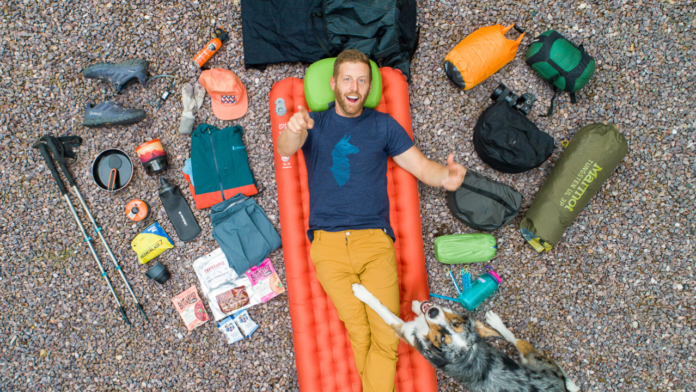A 3 night, 4 day trip is the classic backpacking adventure. You get a thorough taste of the hiking/camping experience, and it’s short enough that you can carry everything you need, without having to worry about resupplies. So what does a full rucksack look like for this kind of excursion and what backpacking essentials do you need to bring?
I’m going to spell out exactly what I took on a shoulder-season trek through the Wyoming wilderness, with my girlfriend and our dog, so that you can get an idea of what you might need for a similar outing. I’ll highlight some of the key decisions and then give a full itemized gear list at the end. Just note, I was in bear-country and therefore needed to tailor my approach accordingly.
How do you eat while backpacking?
For this 3-nighter in the Bridger-Teton National Forest I was required to bring a bear-bin. It didn’t fit very well in my backpack, but I was able to get all our food in there. For dinner, which many would argue is the key meal while backpacking, we packed a couple of pre-prepped, semi-homemade options, as well as some Trailtopia dinners + desert.
Pro backpacking food tips
Eat the heaviest stuff first so that you have less and less to carry each day. In our case, that meant mac n’ cheese with sausage the first night, burritos the second, and then our dehydrated stuff last.
For quick-energy during the day, we brought along a generous supply of Pro Bars and Scratch Bars + Energy Chews and a good-sized bag of beef jerky to pad up the “anytime” menu.
For breakfast we shared some chili and some granola (different days). And a little stash of tuna (bagged not canned for weight-saving purposes) to punch-up our lunches
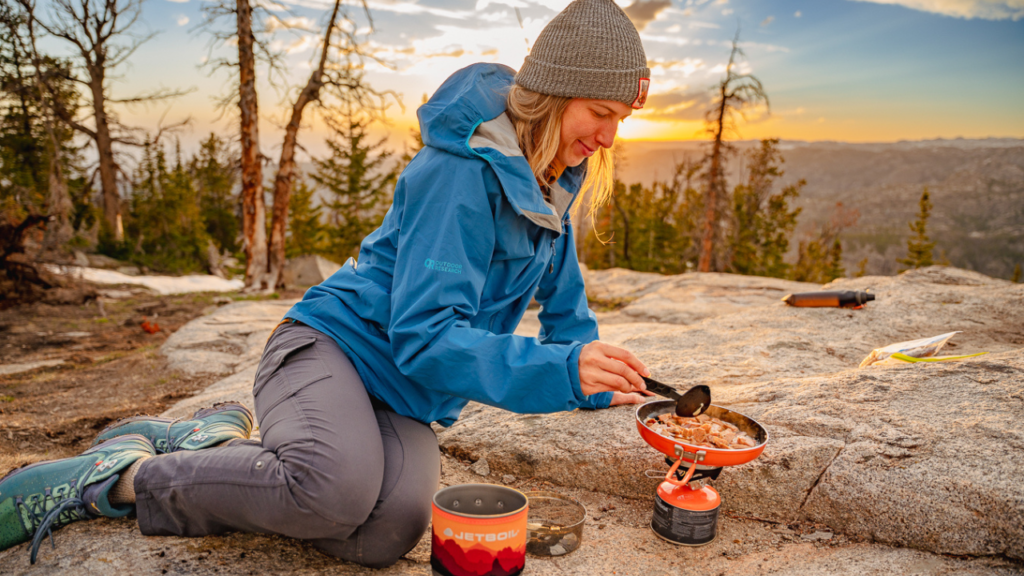
What type of stove is best for backpacking?
If you’ve been following along with BackpackingTV/In4Adventure then you may recall my blurb on ditching Jetboil in favor of the MSR Pocket Rocket. My main takeaway was that being able to simmer was a powerful tool for cooking actual meals, rather than just boiling water with the JetBoil to use for dehydrated foods.
JetBoil MiniMo or MSR Pocket Rocket
Well, many people in the comments, and even some folks from JetBoil were quick to point out that I wasn’t exactly comparing freeze-dried apples to freeze-dried apples. Yes, the JetBoil Flash is designed to give you boiled water in an instant, but with the JetBoil MiniMo you can adjust the flame and use a skillet (our primary method of cooking). So the MiniMo was my stove of choice for this go-round, but I’m also a huge fan of the MSR Pocket Rocket.
What type of water filter is best for backpacking?
For this adventure, I went with the Peak Series Squeeze Filter from Lifestraw. This 1L soft flask compares to the Katahdin BeFree. They both filter out parasites, micro plastics, and other gunk that can be floating around in there, but they do not filter or treat viruses. For those backcountry Wyoming water sources, this was a perfect candidate.
The main difference between the two is that the Peak Series is made from a more durable material, which also makes it a bit heavier than the BeFree. I also noticed that the Peak Series filter had a faster flow rate. It’s nice to not have to tire out your mouth to get a fresh slurp of water. If you’re interested in learning about even more filters/purifiers, check out my recent article, where I compare and contrast several inexpensive options.
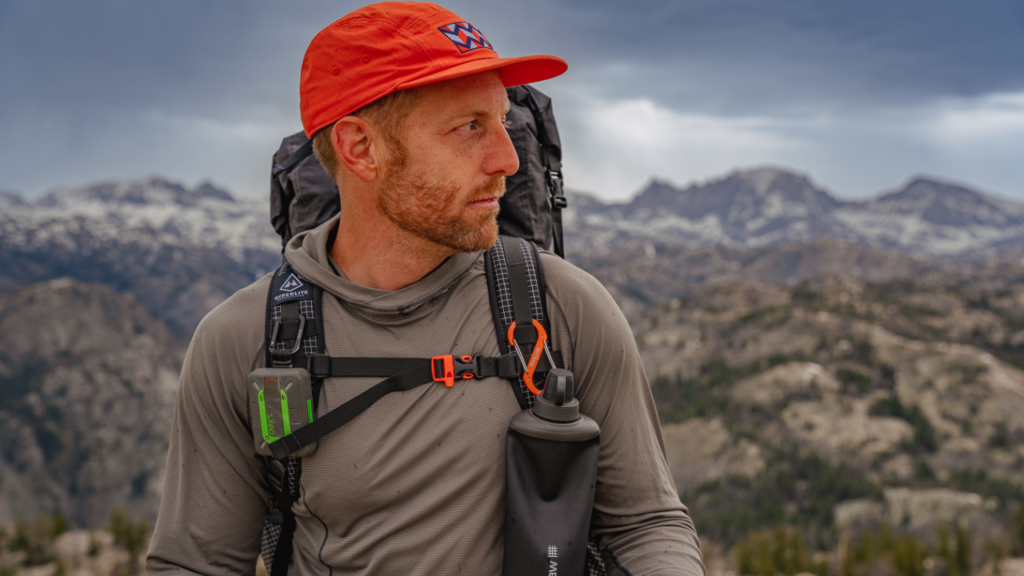
How do you communicate while backpacking?
Given that cell-service is often dubious in the wild, I always bring my Zoleo Satellite Communicator in case of emergency, or for sending little check-in messages to loved ones when I arrive at camp.
Is there an App to track your hike?
You betcha. I have taken to using the Caltopo App. Before heading out on this backpacking trip, I was able to set my desired route and download the specs for use offline. This way I could refer to it at any time and always see our progress (or sometimes lack thereof…). I recommend having something like this to help you navigate, especially if you’re venturing into unknown parts. But don’t just rely on your fancy tech to bail you out. Batteries die and devices fail for all kinds of reasons. So make sure you have a good old-fashioned paper map with you too.
Are packing cubes worth it for backpacking?
On these kinds of backpacking trips I like to use Hillsound’s Packstack Pros. I’m a big fan of organization and these help me to dial that in, especially if the backpack is a simpler design (more on that in a second). Also, these now double as my camera bags. They’re not as durable as ones that are specifically designed for cameras, but they’re much lighter. I find that the surrounding clothes make for a good enough cushion to protect everything.
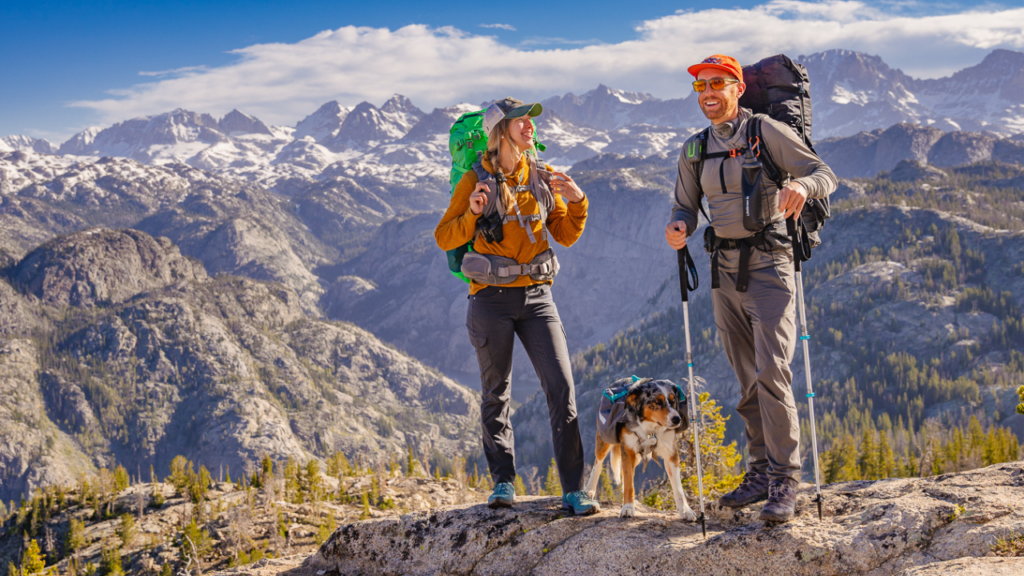
Backpacks we used on this trip
For this hike my partner and I used different packs, which allowed us to see the pros and cons of both. I took the Hyperlite Mountain Gear 3400 Southwest Backpack, while Christie brought the Mystery Ranch Bridger 55 for Women. I’ve spoken fondly of Mystery Ranch many times and so I’ll focus more on the other guy as a point of reference.
How do you pack Hyperlite Mountain Gear 3400 Southwest Backpack?
This backpack is essentially a big tube. Since it doesn’t have compartments, the only way to pack it is just by stuffing things in (remember to put the heavier stuff on the bottom). This is where the Packstack Pro organizers really shined for me. They let me organize my gear much better than if I just had this no-frills pack on its own.
Are Hyperlite backpacks waterproof?
The Dyneema material that Hyperlite uses is both water-resistant and durable. As long as you seal the top correctly, then it’s basically like hiking with a big dry-bag that is essentially waterproof.
Are Hyperlite backpacks comfortable?
This is an area where the 3400 Southwest is lacking a little bit. In order for it to save weight, those plush shoulder/hip straps and supportive structure (like can be found on Christie’s Mystery Ranch Bridger) had to be stripped away. So the trick with the Hyperlite is to not over pack it. I would say the 3400 Southwest would be comfortable with 30-pounds or less inside. Since I had my camera gear, I was closer to that 40-pound range. This extra load made the minimal straps more noticeable while hiking.
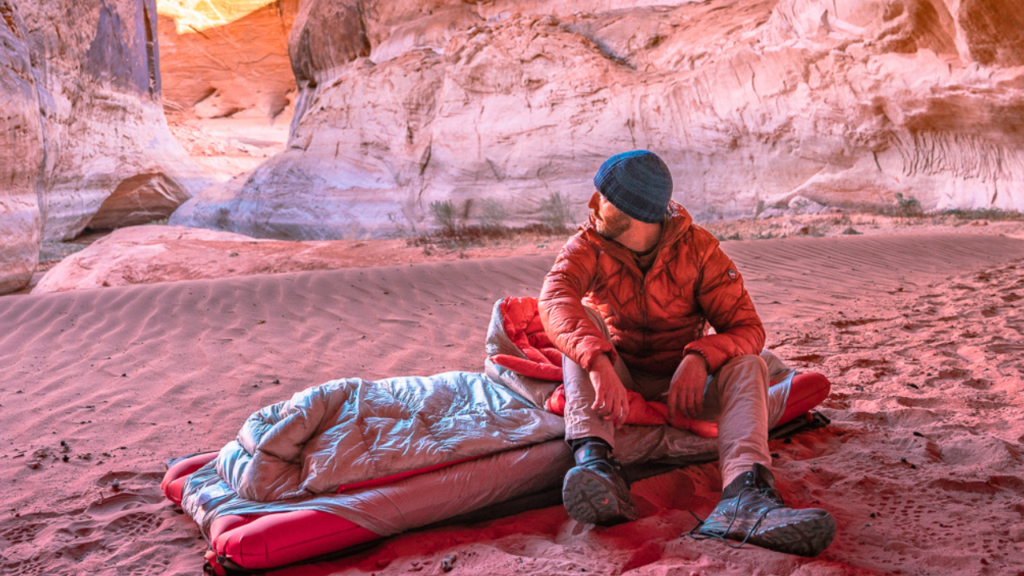
What is the difference between a top quilt and a sleeping bag?
My buddy, and fellow backpacker extraordinaire, Dan Becker, recommended I give the Outdoor Vitals StormLoft TopQuilt a try. It’s wild to see such a minimal sleeping bag. In fact, it’s not even a sleeping bag because it doesn’t have a bottom part. Instead, it just anchors to the sleeping pad or mattress.
The idea is that the weight of a person’s body compresses the floor of the sleeping bag to the point where the down insulation is rendered moot. Therefore, it’s possible to ditch this part in order to save weight, and rely on the pad/mattress to offer some protection/warmth.
I get the theory, my only critique is the overall cozy-factor that I’ve come to love so much with my mummy-style sleeping bags. But as always, there are trade-offs to be calculated between weight and comfort.
Do dogs sleep in the tent when camping?
When Kristi, Kovu, and I go camping we use the Marmot Tungsten Ultralight 3-person tent.
If you are a dog couple on the hunt for a tent, then I highly recommend this one for the extra space without the extra weight. 2-person tents are generally just enough for two people sleeping shoulder to shoulder. If you try to squeeze a dog in there somewhere, then it’s going to get pretty cozy. Actually it’s going to get very uncozy. We’ve put a ton of miles on the Tungsten lately, including in some gnarly conditions, and it’s been an all-around great tent.
That covers many of the main staples I used for this 3-night, 4-day trip with my gal and our dog. As promised, here is a full breakdown of everything I brought. I hope this demystifies the packing process and gets you excited for your own upcoming trek. For more info, including tips, gear-reviews, and more of my own adventures, subscribe to the newsletter!
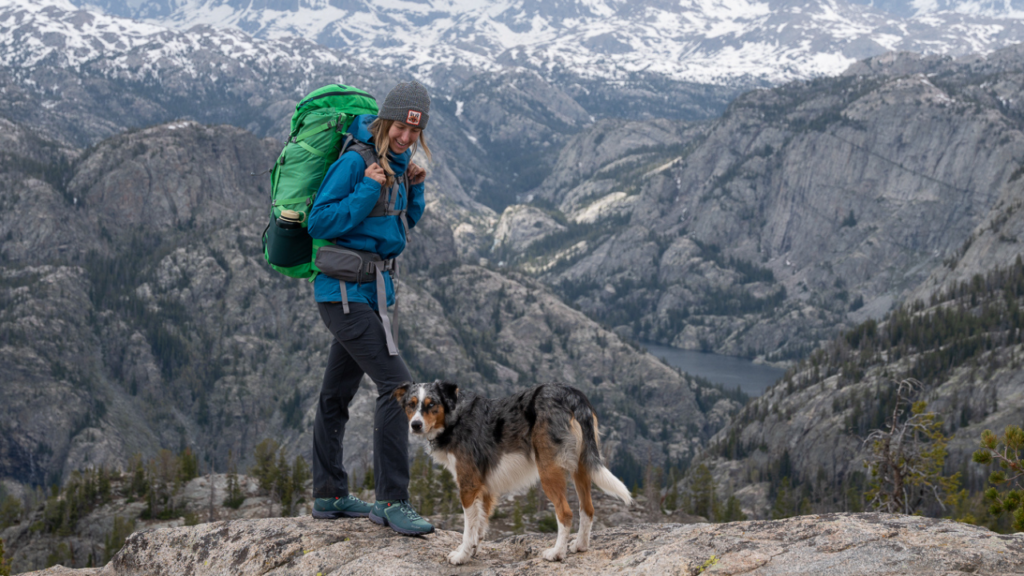
3 Night 4 Day Backpacking Food List
Dinner 1
Annie's Mac & Cheese w/ sundried tomatoes, Aidells sausages, onions, coconut oil
Dinner 2
BeanVivo Chile with Rice and tortillas
Dinner 3
Trailtopia Freeze Dried Meals
Breakfast 1
BeanVivo chile, alpine start coffee
Breakfast 2
hearty Granola, powdered milk, alpine start coffee
Breakfast 3
hearty Granola, powdered milk, alpine start coffee
Lunches and snacks
Tuna, Ramen noodles, pepperoni sticks, peanut butter MnMs, almonds, Skratch Labs trail bars, ProBars, and Beef jerky
3 Night 4 Day Backpacking Trip Gear List
NOTE: Some of these are affiliate links where I’ll earn a small commission if you make a purchase at no additional cost to you, but it’s a great way to show your support. Thanks!
Hyperlite Mountain Gear Backpack
Mystery Ranch Womens Bridger 55 Backpack
Big Agnes Q-Core SLX (discontinued?, this is the alternative)
Outdoor Vitals Stormloft Topquilt
Outdoor Research Longsleeve hoodie
Gloves | Hestra Bike Ergo Grip Glove



